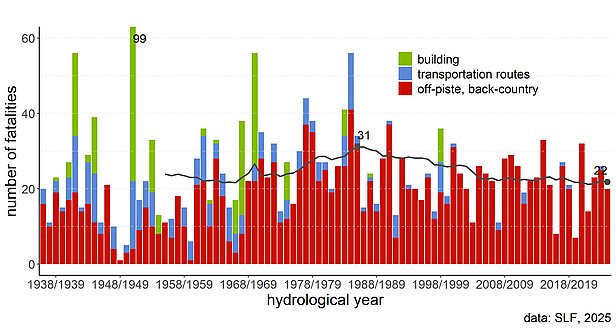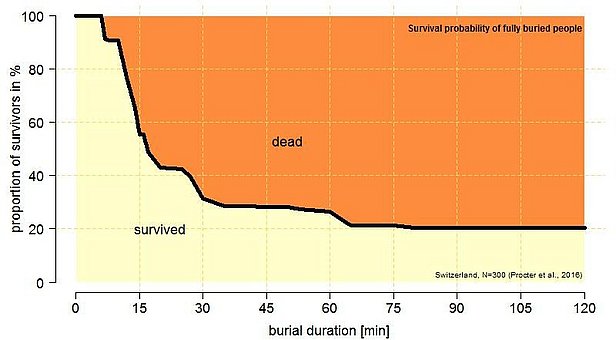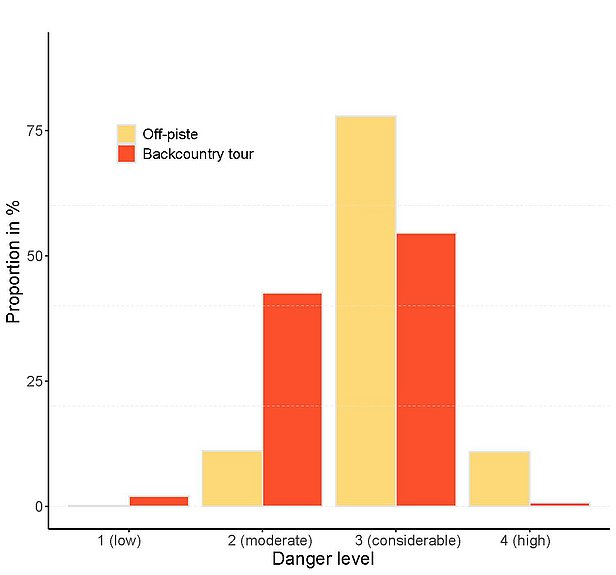The SLF has been collecting comprehensive data on all the avalanche accidents that have occurred in Switzerland since the winter of 1936/37. These data are compiled and analysed in the annual accident reports published by the SLF (German only). The most important statistics are presented here in a short overview.
Avalanche victims since 1936 ¶
The annual average number of fatalities over the entire period is 24 (Fig. 1).

Avalanche accidents are life-threatening events! ¶
According to statistics, only a little more than one in two people who are completely buried by an avalanche (head in the snow) survive. The most common cause of death among those who are completely buried is asphyxiation because the person often has no air supply or has access to only a small pocket of air. The chances of a person surviving a complete burial therefore reduce significantly after just 15 minutes (Fig. 3, for details refer to Procter et al., 2016). For this reason, companions have a crucial role to play in quickly locating and freeing the person who is buried.
Life is also endangered if a person is swept along by an avalanche, even if the victim is not completely buried: at least one in seven fatalities occurs as a consequence of serious injury.

Avalanche accidents per danger level ¶
According to long-term average figures, most accidents occur when danger level 3 (considerable) applies (Fig. 4).
